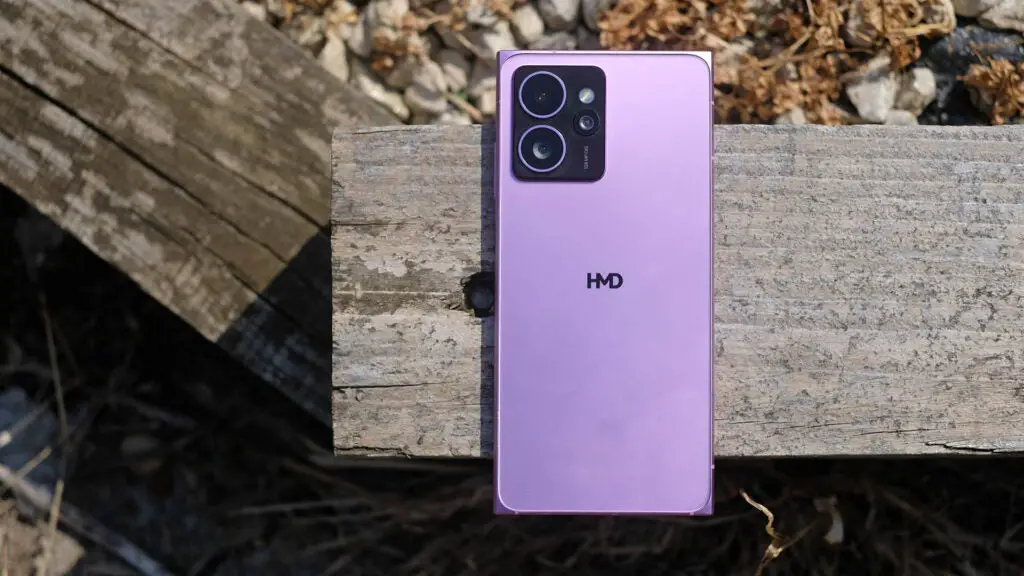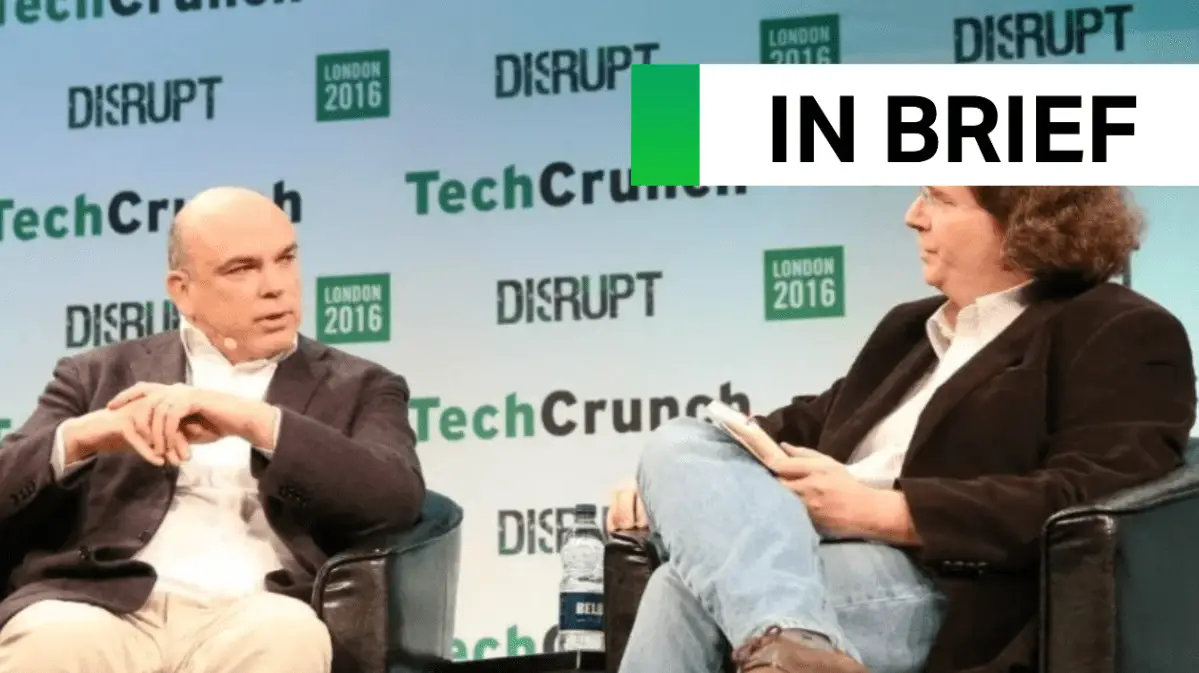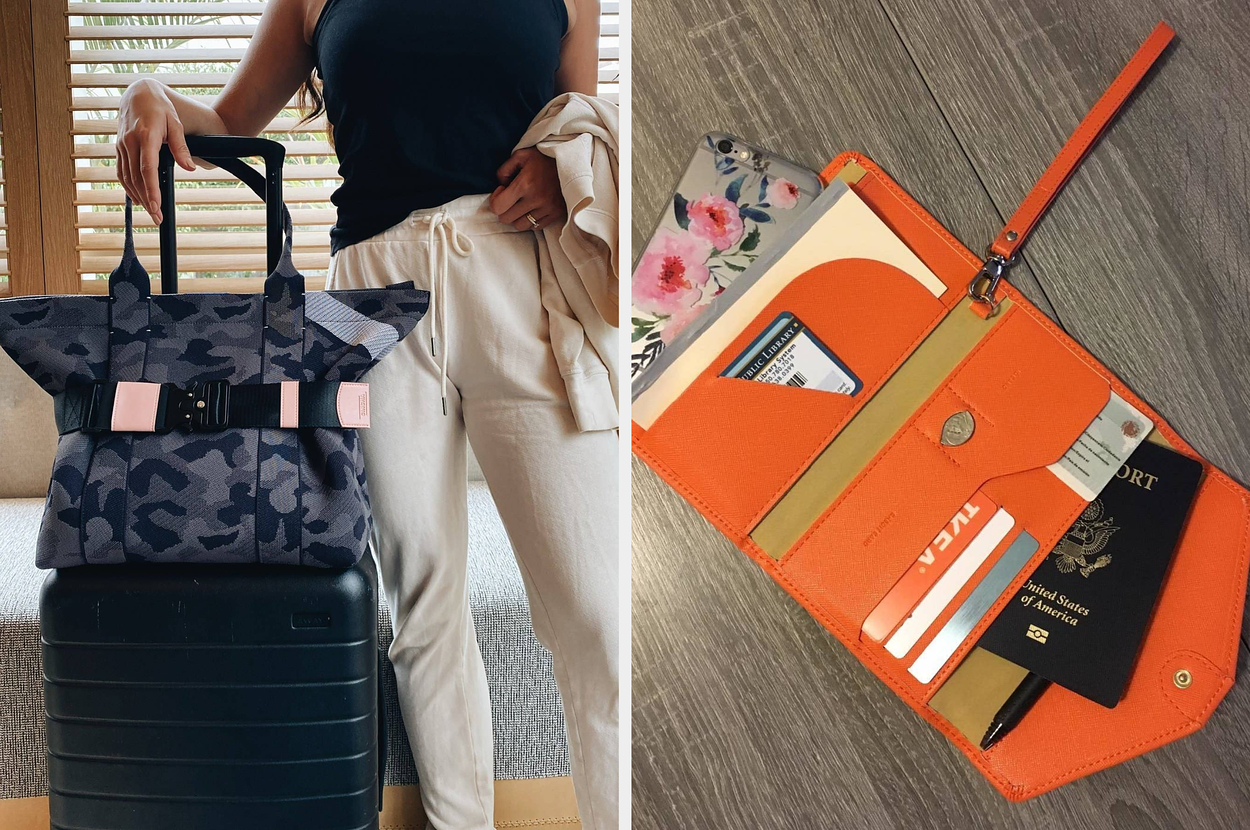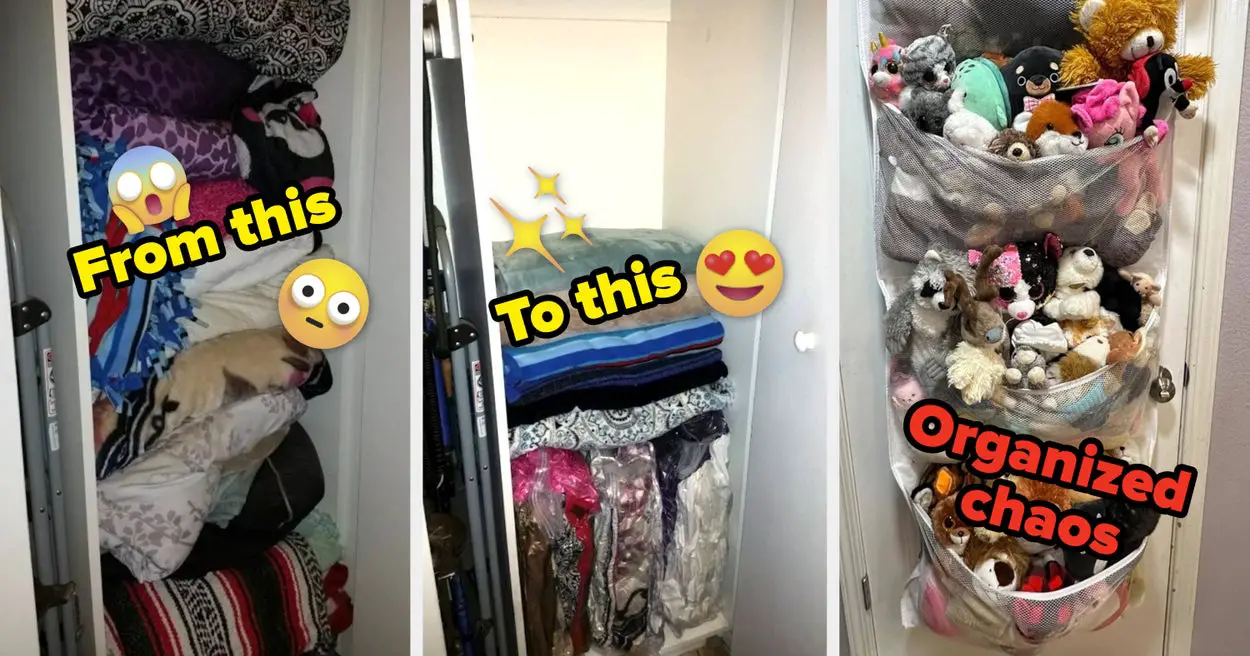Verdict
The HMD Skyline looks like a classic Nokia, and has the at-home repairability of some of the Nokia phones HMD has made in recent years. It has an unusually broad range of features for the money too, including metal/glass build, wireless charging and a zoom camera. Some of the basics can’t match up to its direct rivals, though: camera quality, gaming performance and ruggedisation.
Pros
- Designed to be user-repairable
- Evokes the charming old Nokia Lumia designs
- Metal and glass shell
Cons
- Relatively weak display protection
- Focus issues with zoom camera
- Poor for low-light photography
- Repairability leads to chunky design
Key Features
- User-repairableIn collaboration with iFixit, you can buy components designed to be replaced by the end user, including the display.
- Zoom cameraThe Skyline has a 2x zoom camera. It’s not a super-powered periscope zoom, but it’s useful.
- Wireless chargingUnlike many phones at the price, the HMD Skyline supports wireless charging at up to 15W.
Introduction
The HMD Skyline looks like a Nokia phone. It isn’t one. But it might as well be, as HMD was the force behind Nokia phones for years.
HMD’s aim here is to get you elements of high-end phone design without spending a fortune. It’s also a handset you can fix yourself, or at least replace parts of. This is thanks to a collaboration with iFixit.
Is the phone itself any good? The quality of the design is good for the money, although its older display glass tech and lack of screen protector are unforgiving. The camera’s neat zoom is offset by poor low-light image quality and so-so general image quality at times.
You also pay for the repairable style with general chunkiness and lower battery capacity, which can be an issue on busy days despite the great efficiency of the HMD Skyline’s (kinda weak) Qualcomm processor.
The HMD Skyline is an interesting phone, then, but one whose issues should make some buyers think twice at £399-499, depending on storage and RAM allocation. That is more money than the Samsung Galaxy A55 5G and (up to) the same as the Google Pixel 8a, which is better for photography.
Design
- Designed for easy repairability
- Fairly thick and large for its screen size
- Nokia-inspired design
HMD is best known for making phones under the Nokia banner. But the Skyline reminds me more of one of the late Nokia Lumia golden era handsets than some of HMD’s actual Nokia phones.
The Nokia Skyline is dead ringer for one of Nokia’s Lumia phones, like the Lumia 800. These were Windows phones — yep, those used to exist — that made charming use of colour, and often had quite a rounded feel but rather severe squared-off corners. Just like the Skyline.
Those phones were also known for making plastic-bodied phone shells feel and look quite luxurious. But HMD hasn’t gone down that road. The Nokia Skyline has an aluminium mid-frame and a glass back panel.
There is no significant use of plastic here at all, which is in itself a win at £400. Mid-tier phones like this have made increasing use of plastic for the rear panel or sidewalls in recent years. It’s far flashier than the Nokia G22, another self-repairable phone made by HMD.
The HMD Skyline does not feel remotely cheap, and I’ve received a bunch of positive comments about how it looks too. My own first impression was that Skyline is pretty chunky, though.
I was surprised to hear it has a relatively low-capacity 4600mAh battery, when a phone this size might ordinarily have beyond 5000mAh. There is a good excuse, though.
The HMD Skyline is part of a small, progressive alliance of phones intended to be repairable. And that’s repairable by the user, too, not just a verified service centre. I’m honestly impressed at how little this looks like a repairable phone. It’s just a little chunky, because that repairability makes slimming down trickier. You can’t just glue everything in place.
It also makes higher-end water resistance trickier. The IP54 rating quoted by HMD is limited, far lower than the Pixel 8a’s IP67. Similarly, the glass used is Gorilla Glass 3, a now pretty ancient standard — no doubt because it’s cheaper than Gorilla Glass Victus or one of the intermediary generations
I have particular beef with this glass, because I’ve managed to crack it. This was while in my flat too, which does not have concrete floors or any drops. Somehow this thing cracked (basically in half) from waist height, and I believe the lack of plastic buffer layer between the aluminium sides and the display glass may have contributed.
The parts you can repair are the display, the rear cover, the battery and charging port. But these aren’t actually available (in the UK) at the time of writing. A screen repair won’t come cheap either, as the screen glass and display panel are bonded together.
Claims of the lifetime of the HMD Skyline’s security updates are unimpressive too: two major Android updates and three years of security updates. The message is less that the Skyline is a phone you can (or at least should) use for years upon years, just that your upgrade cycle won’t necessarily be accelerated by a busted back or a smashed screen.
Other aspects of the HMD Skyline’s outer hardware are largely ordinary too. It doesn’t have a headphone jack and, in Sony style, the fingerprint reader is built into the side power button rather than using an in-screen sensor. It’s fairly fast, though, noticeably snappier than the far pricier Sony Xperia 1 VI I used beforehand.
There’s also a “custom” button on the other side of the phone. You can set long presses and double taps to do scores of different things, from looking at your eBay watch list to heading directly to a specific group in WhatsApp. It’s not just an annoying way to accidentally call up Google Assistant.
The speakers, predictably, aren’t remotely in the same league as a flagship phone’s, though. They are rather just respectably decent for the HMD Skyline’s mid-range status. We get stereo drivers, one in the earpiece, one on the phone’s bottom. Max volume is fine and they don’t sound ugly at max volume, but there’s none of the mid-range and lower-frequency output that makes a phone speaker special, compromised as it may still be.
Screen
- Limited control over the screen
- Colourful and contrasty
- Solid brightness outdoors
The HMD Skyline has a 6.55-inch screen. I’d actually assumed it was a little larger, just because the casing’s large size subtly directs your expectations.
This is a pOLED screen, suggesting it uses a screen made by LG rather than Samsung or another rival, and its resolution is a commonplace 2400 x 1080 pixels.
There’s nothing out of the ordinary here. The specs are just what I’d expect, and there are no onerous hardware cuts.
I was a little surprised by how HMD has approached the Skyline’s display calibration, though. Fresh out of the box my HDM Skyline was set to a 60Hz refresh rate mode. And after noting its slightly chunkiness, my second observation was its menu scrolling was in no way smooth.
This phone is no 60Hz throwback, though. It has a max refresh rate of 144Hz, higher than that of some top-price phones. My best guess is either 60Hz is used to mitigate the lower-than-average battery capacity, or it’s a software fluke of these review devices, and yours will behave differently.
I kept the phone at 60Hz for a few days in case the former was the plan and, yep, I think most people can bed back into the 60Hz life in no time.
Adaptive, 120Hz and 144Hz modes are on hand for the more anally retentive of eyeballs. And I’d recommend using one of these to most folks.
What the HMD Skyline lacks, though, is any way to easily alter colour saturation. Sure, there’s a colour temperature slider, but you can’t switch down to a less or more saturated colour mode. For the nerds out there, my best guess is this screen is aiming for DCI P3.
It’s fairly high-energy colour, but there is at least a very clear separation between the super-bold red of the YouTube logo, for example, and the more muted red of the Gmail logo. However, it does flatter your photos rather than making them appear just as they’d look on another screen.
Maximum brightness is more than respectable for a mid-tier phone, though. I measured 922 nits using my colorimeter, and found it acceptably legible in super-bright direct sunlight.
Camera
- Weak low-light performance
- Limited video ability
- Dedicated zoom is nice to have
The HMD Skyline has three rear cameras. I’ve spent years complaining about mid-range phones that bulk up their camera numbers with trash sensors and lenses there to do little more than look good on a spec sheet.
Bad macro cameras? Depth sensors that may do almost nothing? They are fit for Room 101, but the HMD Skyline appears to have three legit cameras. There’s a 108MP primary camera, a 50MP 2x zoom and a 13MP ultra-wide.
No filler at all. The bad news is none of these cameras are particularly great. It’s likely as much down to HMD’s processing as any hardware limitation.
The HMD Skyline uses a Samsung HM6 for its main camera, seen in loads of phones from the Xiaomi 12T to the fairly cheap Redmi Note 13. Here, it can capture lovely-looking photos in good lighting.
But even in tree cover the images look far less confident up close, and with clearer degradation in the corners of the frame and general fuzziness throughout.
Things get worse at night. You have to manually switch to the Night mode to get anything but dark-looking images from the HMD Skyline. And in Night mode, it looks almost as though the resolution drops to a few megapixels rather than 12MP, let alone 108MP. It’s disappointing when the main camera apparently has OIS, optical image stabilisation.
This is a big issue when for similar money online you could pick up a Pixel 8a, which takes great night pics.
The HMD Skyline’s ultra-wide camera uses a fairly humble Omnivision sensor that, much like the wide, can take charming daylight images but falls apart fairly swiftly.
Finally, there’s the 50MP zoom camera, which uses a Samsung JN1 sensor. This, again, isn’t high-end hardware. But it does provide far more persuasive close-up detail for subjects when shooting in daylight.
Sure, there’s a strange combination of a lot of noise and a digitally processed appearance, but the distance shooting potential is still great considering the HMD Skyline’s cost. You just, again, have to be in pretty good lighting to get worthwhile results.
I also experienced major issues with focusing using the HDM Skyline at its top 4x zoom mode. Often it will simply refuse to focus properly.
While I’m a total sucker for a decent phone zoom — and the Skyline’s is at least serviceable — this camera array in general is a bit of a disappointment.
There are some compelling strengths, though. I find the HDR optimisation powerful, capable of making sure those brightly lit clouds don’t end up blown out. And the front 50MP selfie camera actually seems to hold up surprisingly well in poor lighting.
Facial detail is decent for this mid-range tier and you have the option of wider or single-subject views. It’s no surprise when you read the specs — a 1/2.8-inch sensor is pretty good for a selfie camera.
Video is limited in some important ways as well, though. The HMD Skyline can’t shoot at 4K@60, just 4K@30 or 60 frames per second at Full HD. You only get proper stabilisation at 1080p too.
Just like the night mode limitations, these hard limits are quite stark at the price in 2024. My usual reaction would be to suggest fewer, better, cameras might be an idea. But it seems clear the root of the HMD Skyline’s imaging problems may be as much about software as hardware. Processing matters hugely now and has done for years.
Performance
- Very limited thermal throttling
- Mediocre graphics power
The HMD Skyline has the Snapdragon 7S Gen 2 processor. This is a mid-range chipset that exemplifies the long-standing and huge divide between the graphics performance of Qualcomm’s mid-tier and high-end phone chipsets.
HMD’s Skyline scores 3022 in 3D Mark Wildlife, which can’t even match a flagship processor from 2020. However, in more CPU-led tasks it holds up perfectly well.
It makes a lot of sense really: for the less enthusiast-led phones, just make sure everyday tasks feel good.
However, we’re also at a level where Android game development ambition has slowed to an extent where all the popular stuff will run well on the HMD Skyline too. There’s no Resident Evil 7 on Android, as there is on iPhone.
One thing I like about these mid-tier performance phones is that throttling and excess heat generation aren’t too much of a problem. Thermal throttling only started after 13 minutes of full pressure, and after 20 minutes the HMD Skyline settled at 91.7% of its peak performance. Not bad.
Software
- Light touch software
- Limited planned software support
- Android 14
HMD phones typically use very straight, unadulterated versions of Android, minus the stylised skins other manufacturers use to give their phones a specific feel of flavour.
Reviewers usually lap this style up. It avoids dodgy stylistic choices, boneheaded UI decisions made just to be different, and it keeps things familiar — in a way you probably want.
HMD is clearly not content with having no angle at all, mind. The sell-in here is that HMD has its own icon style for those who want to make a digital detox easier. How frightfully trendy.
It means the icons for most popular apps have a monochrome appearance when dropped on your home screen. But not the app drawer.
This can be genuinely useful in stopping your eye from being instantly drawn to your social media (or gaming) poison of choice. But I was slightly bowled over by the appearance of these icons at first, with no memory of having agreed to them in the setup process.
That, of course, shows how effective they are. But I’m not entirely confident enough people will know how to switch back to the original icons, if they want (long-press the home screen, select Wallpaper & Icon, then Icon Style). And I certainly wanted to.
That’s the one potential issue, aside from (as mentioned earlier) the limited software support of two Android updates and three years of security updates. The HMD Skyline’s take on Android 14 is clear and simple.
Battery life
- Wireless charging (15W)
- Low-grade fast charging
- Limited capacity for the phone’s size
When I looked over the HMD Skyline’s specs during the earlier stages of testing, its 4600mAh capacity was an immediate red flag. Perhaps I shouldn’t have been too concerned, though, as this phone has way better real-world stamina than the sub-5000mAh flagships I’ve used over the last couple of years.
Getting through a day with a charge was easy at the default 60Hz screen setting. I had up to 40% left by bed time, which is great considering the relatively low 4600mAh capacity.
Even after switching to the higher refresh rate adaptive mode, I was left with around 25-30% left after a moderately taxing day.
No doubt, the HMD Skyline would be even better with a 5000mAh battery, and it can’t take a hammering like a high-battery capacity phone can. But these mid-range Snapdragons are efficiency wizards these days.
I was even moderately impressed by the charging speed, coming from the radically more expensive Sony Xperia 1 VI. They both identify as 30W phones, but this one actually draws 30W, and hits 50% in an OK 22 minutes.
It reaches 100% in 70 minutes. It’s not as swift as a Nothing Phone (2a) or Xiaomi Redmi Note 13 Pro, but it’s OK. You don’t get an adapter in the box, though, and I found the phone’s “adaptive battery protection” a bit flaky. This makes the phone wait for your wake-up time to reach 100% charge, but I keep on waking up to a phone with 80% battery.
HMD goes to unusual lengths in offering wireless charging, of 15W like an iPhone 15. Much like the camera array that does a lot but doesn’t excel at anything, higher-speed cabled charging minus the wireless stuff may have been a better option.
But, as much as anything, I’m showing my own opinion there. I also couldn’t get the phone to charge wirelessly at the full rate, but this could be down to the pad used, or quirks with this early implementation of the Qi2 standard. It’s one of the first phones to use Qi2.
Latest deals
Should you buy it?
Buy if you love those classic Nokia Lumia vibes
If you long for the days of Nokia Lumia phones, you may love the style of this new HMD Android, even if it has no official ties to the old Finnish master.
Don’t buy if you like low-light photography
The HMD Skyline falls down in the key area of mid-range phone competition: the camera. Despite having a handy dedicated zoom, picture quality can’t match the bigger-name rivals in taxing lighting.
Final Thoughts
The HMD Skyline is an odd phone that feels more Nokia than a lot of the HMD-made phones daubed with the Nokia logo.
It’s also a repairable phone, and one without much plastic to cheapen the design.
This is a good start. It’s not perfect, though. The HMD Skyline camera isn’t brilliant despite the fun zoom camera, stamina isn’t great on challenging days and it’s more repairable than it is rugged.
How we test
We test every mobile phone we review thoroughly. We use industry-standard tests to compare features properly and we use the phone as our main device over the review period. We’ll always tell you what we find and we never, ever, accept money to review a product.
Find out more about how we test in our ethics policy.
Used as a main phone for over a week
Thorough camera testing in a variety of conditions
Tested and benchmarked using respected industry tests and real-world data
You might like…
FAQs
Is the HMD Skyline waterproof?
It has limited IP54 water resistance.
Does the HMD Skyline have a headphone jack?
There’s no headphone jack, just a USB-C.
Does the HMD Skyline have wireless charging?
It supports the Qi 2 standard, with charging up to 15W.
Trusted Reviews test data
Full specs
UK RRP
USA RRP
Manufacturer
Screen Size
Storage Capacity
Rear Camera
Front Camera
Video Recording
IP rating
Battery
Wireless charging
Fast Charging
Size (Dimensions)
Weight
ASIN
Operating System
Release Date
First Reviewed Date
Resolution
HDR
Refresh Rate
Ports
Chipset
RAM
Colours
Stated Power
HMD Skyline
£499
$499
Nokia
6.55 inches
128GB
108MP + 50MP + 13MP
50MP
Yes
IP54
4600 mAh
Yes
Yes
76 x 8.9 x 159.8 MM
209.5 G
B0D97PJTQL
Android 14
2024
26/08/2024
2400 x 1080
Yes
144 Hz
USB-C
Qualcomm Snapdragon 7s Gen 2
12GB, 8GB
Neon Pink, Twisted Black, Blue Topaz
33 W










